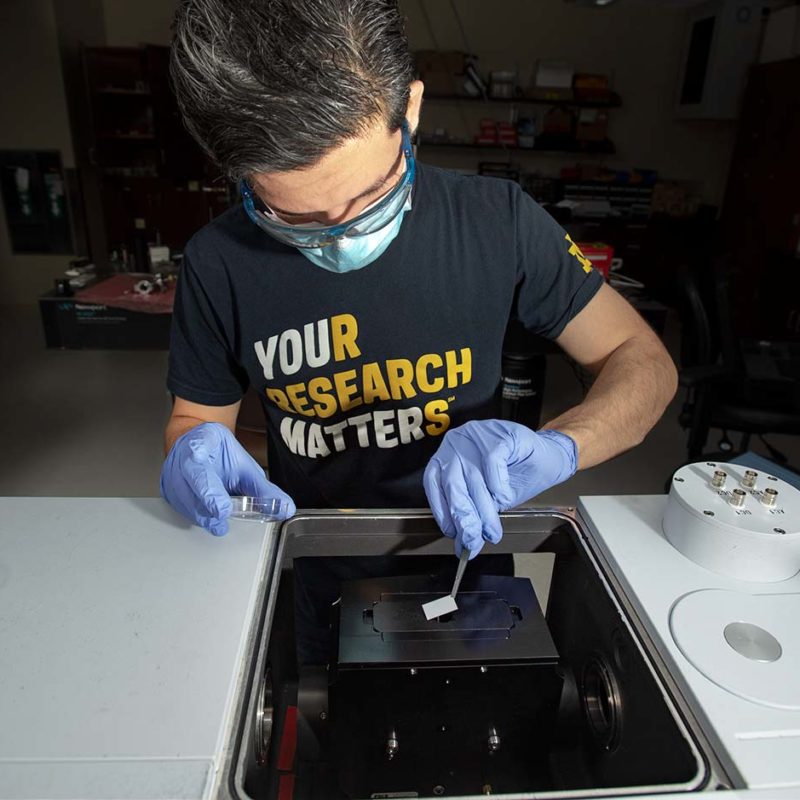Rainbows are formed when light bends — or refracts — as it enters and exits a water droplet. The amount that the light bends depends on the color of the light, resulting in white light being separated into a beautiful spectrum of colors. The index of refraction, one of the tools that optical engineers leverage to control light, describes the interaction between light and matter.
Recently, materials that have an index of refraction that vanishes have gained significant interest across the scientific and engineering communities. These materials, called epsilon-near-zero (ENZ) materials, show great promise for applications in imaging small objects, detecting minute concentrations of targeted molecules (e.g. explosives, toxic chemicals, pollutants), and enabling a new generation of optical devices and circuits.
A team from Notre Dame in collaboration with researchers at the University of Texas at Austin, Cornell University, and the University of Massachusetts at Lowell has shown how the optical properties of ENZ materials can be engineered to improve optical devices. Their work leverages many of the same materials that are used in industry for high-power electronics and could one day allow for the integration of this novel optical behavior into optical devices.
Optical devices create, manipulate, or measure electromagnetic radiation — light, both the visible and invisible. Eye glasses and camera lenses, microscopes and telescopes, lasers, light-emitting diodes, and solar cells are examples of common optical devices that have been developed to help see and sense the world. Each of these devices exploits the index of refraction in a different way.
The team shared its results in a recent paper published in Optics Express.
“Many molecules have vibrational modes in the mid-infrared spectral region, and these vibrations can be used to detect them,” said Irfan Khan, electrical engineering Ph.D. student and lead author. “We used ENZ materials to couple to a special optical mode, known as the Berreman mode, to engineer specific optical responses in semiconductor materials currently used in industry.”

Engineering these novel optical modes using semiconductor materials is a critical step to incorporating ENZ materials into future optical devices and circuits says Anthony Hoffman, associate professor of electrical engineering and project lead.
“The fact that ENZ materials are readily available, simple to fabricate, and operate well on a very small scale also makes them ideal for a variety of applications.”
— Nina Welding, College of Engineering
